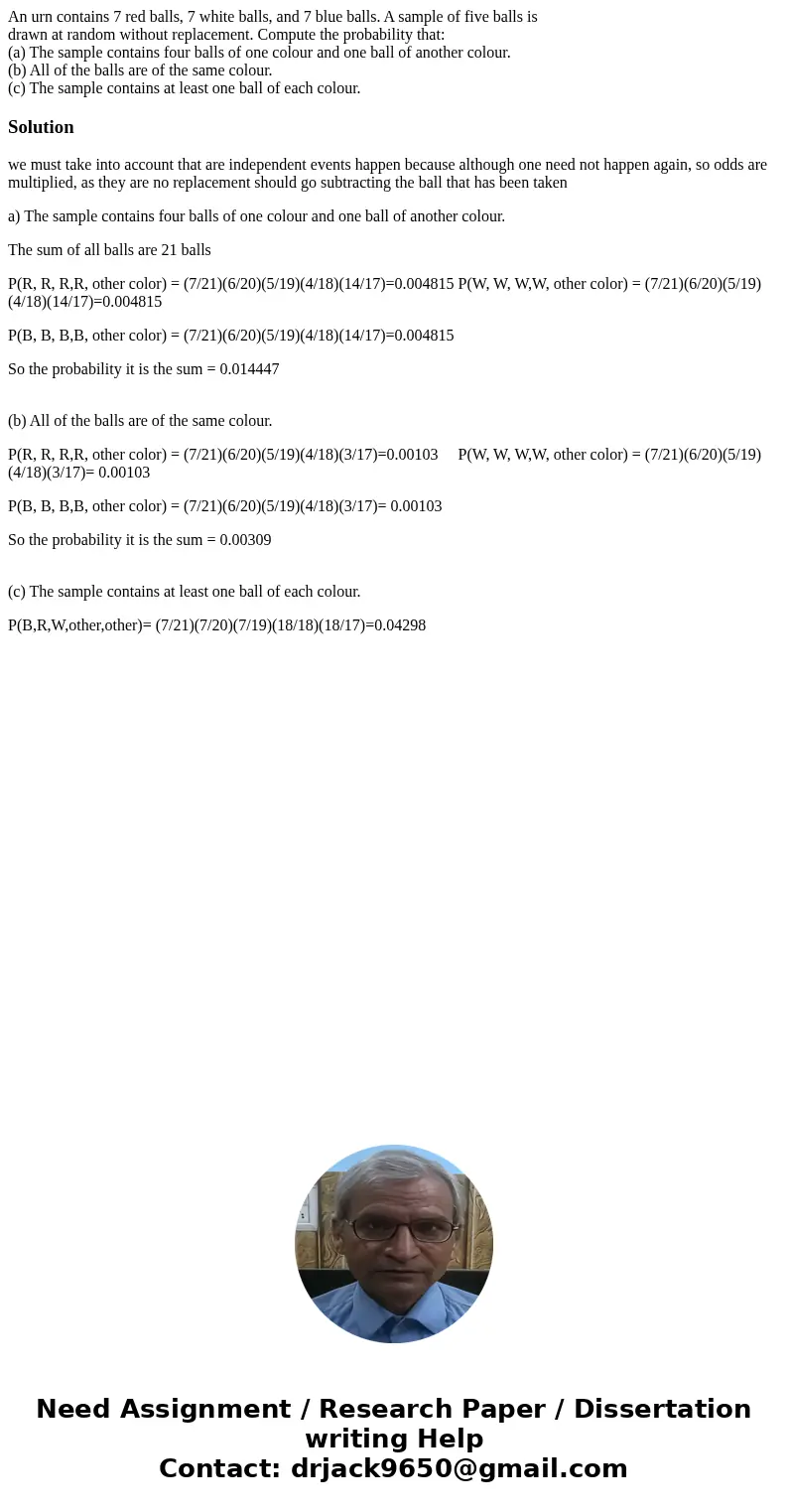An urn contains 7 red balls 7 white balls and 7 blue balls A
An urn contains 7 red balls, 7 white balls, and 7 blue balls. A sample of five balls is
drawn at random without replacement. Compute the probability that:
(a) The sample contains four balls of one colour and one ball of another colour.
(b) All of the balls are of the same colour.
(c) The sample contains at least one ball of each colour.
Solution
we must take into account that are independent events happen because although one need not happen again, so odds are multiplied, as they are no replacement should go subtracting the ball that has been taken
a) The sample contains four balls of one colour and one ball of another colour.
The sum of all balls are 21 balls
P(R, R, R,R, other color) = (7/21)(6/20)(5/19)(4/18)(14/17)=0.004815 P(W, W, W,W, other color) = (7/21)(6/20)(5/19)(4/18)(14/17)=0.004815
P(B, B, B,B, other color) = (7/21)(6/20)(5/19)(4/18)(14/17)=0.004815
So the probability it is the sum = 0.014447
(b) All of the balls are of the same colour.
P(R, R, R,R, other color) = (7/21)(6/20)(5/19)(4/18)(3/17)=0.00103 P(W, W, W,W, other color) = (7/21)(6/20)(5/19)(4/18)(3/17)= 0.00103
P(B, B, B,B, other color) = (7/21)(6/20)(5/19)(4/18)(3/17)= 0.00103
So the probability it is the sum = 0.00309
(c) The sample contains at least one ball of each colour.
P(B,R,W,other,other)= (7/21)(7/20)(7/19)(18/18)(18/17)=0.04298

 Homework Sourse
Homework Sourse